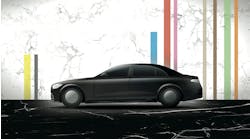The name might sound familiar—really familiar. Todd Tracy, personal injury lawyer and auto safety expert for the Tracy Law Firm in Dallas, is most famously known for representing the winning plaintiffs in the pivotal John Eagle Collision Center case, which reached a $42 million verdict in favor of Maria and Matthew Seebachan, who were trapped in a burning 2010 Honda Fit after an improper repair.
Equipped with 30 years of experience suing vehicle manufacturers for vehicle defects and an extreme passion for consumer safety, Tracy has been traveling the U.S. educating those in the industry about the major issues that come with improper repairs and, most importantly, how to more effectively handle insurer-repairer relations. Tracy shares his insight and predictions for the future of the industry.
Where do you see insurer-repairer relations going in, say, the next five to 10 years?
I think in the next 18 months, it’s going to be rocky. Anytime you enact change, it’s going to be a rocky path and there’s going to be some friction, and there’s going to be some uprising, and there’s going to be some casualties along the way—and that’s OK. That’s how this country started. Every good movement we had in this country started with some casualties.
In the next five years, I believe you will see the elimination of DRPs. Insurance companies are going to get out of the bullying business. They're going to put their trust and faith in the repair facilities. I think it’s going to knock out your “Joe Blow” of repair facilities because they’re not going to be able to keep up with the technology.
The vehicles we have today are not what we had 30, 10 or even five years ago. The shops you’re taking these vehicle to need to be on the cutting edge of repairs because of the types of materials being utilized.
These men and women that work in the repair industry, these are skilled folks. They may consider themselves blue-collar workers, but they’re are smart and highly, highly educated to do what they’re doing for a living because they work with some of the most technologically advanced material on the planet. There isn’t going to be a need for the mom-and-pop shop anymore because they’re not going to be able to keep up with the times and technology.
Do you think, on a national scale, the insurance-collision relationship has changed after the multitude of lawsuits? Especially the John Eagle Collision case?
It was the right case, with the right outcome at the right time with the right environment for serious change to ultimately result from this particular case. I do believe it’s a watershed moment because, for years, you’ve had just a handful of repairer shops that were standing up to the insurance companies who were insisting that they do not follow OEM repair specifications or insisting on utilizing aftermarket parts.
Now what you see is a groundswell of movement where literally thousands of repair shops are coming together and saying, “you know what, we’re tired of the insurance companies bullying us into not following OEM repair specifications and forcing us to use aftermarket parts when we know they’re inferior.” A large part of that is that the body shops are getting their customers involved. Now you have a two way assault taking place on the insurance companies, besides the legal aspect.
What are your tips for shops to avoid lawsuits that could be traced back to insurance negotiations?
Follow OEM. Follow I-CAR. When in doubt, and there’s no OEM and there’s no I-CAR, you put it in writing to the customer. “We do not have a recognized protocol to repair your vehicle back to the way the OEMS want us to.”
If the insurance companies are telling the repair facility to not follow OEM repair specifications or to use aftermarket parts, the repair facility needs to immediately put it in writing to the customer and they need to say, “We are not going to do this because we believe the insurance company is jeopardizing you and your family’s lives.”
Then you get the customer involved and lastly walk away from it if they won’t do it. If the insurance company is insistently bullying you into creating a ticking time bomb, walk away from that repair.
How can shops do a better job of getting paid for doing proper, OEM-approved, safe repairs?
Hire a lawyer. Here’s what I’m telling shops around the country: If the insurance companies are going to bully you into not doing it the right way, do it the right way, take the loss and sue them at the end of the year, because one thing that insurance companies know is that once litigation begins, that’s what’s going to change the tide.
Having thousands of these repair facilities coming after you is one thing, but when you’ve got a pitbull chasing after you, like me, and you get the sharks turning around in the water, that’s what’s finally going to motivate the insurance companies to finally get out of the repairer business and into the paying business.
They seem to forget too that they may lose money in the short term, but they're going to gain it back with premium increases. It’s the perfect business model. They’re not going to lose money on it—they’re going to get their money back because they’ll pass it on to the customer. But guess what? The consumer wants their vehicle repaired properly because, after all, this is the second most important purchase ever made by people behind a house. Why shouldn’t it be safe? And why are we letting the insurance company get in the way of doing what’s right?
Are there legal rights shops can call attention to when negotiating with insurance?
It seems to me that the DRPs are pretty worthless because the insurance companies have a loaded weapon to the temple of the repair facilities’ owners’ head and he doesn’t have any recourse going back against him.
The recourse he has going back against him is by getting the customer on his side. These repair shops have to realize that, at the end of the day, their customers came to them. They need to sit there and realize that we need to have a dual front. Attack them from the front and the rear. When you have the customer on your side, you’ve doubled the effort. Then, you get the customer out on social media, because this stuff can spread like an epidemic if we keep the word out there.




